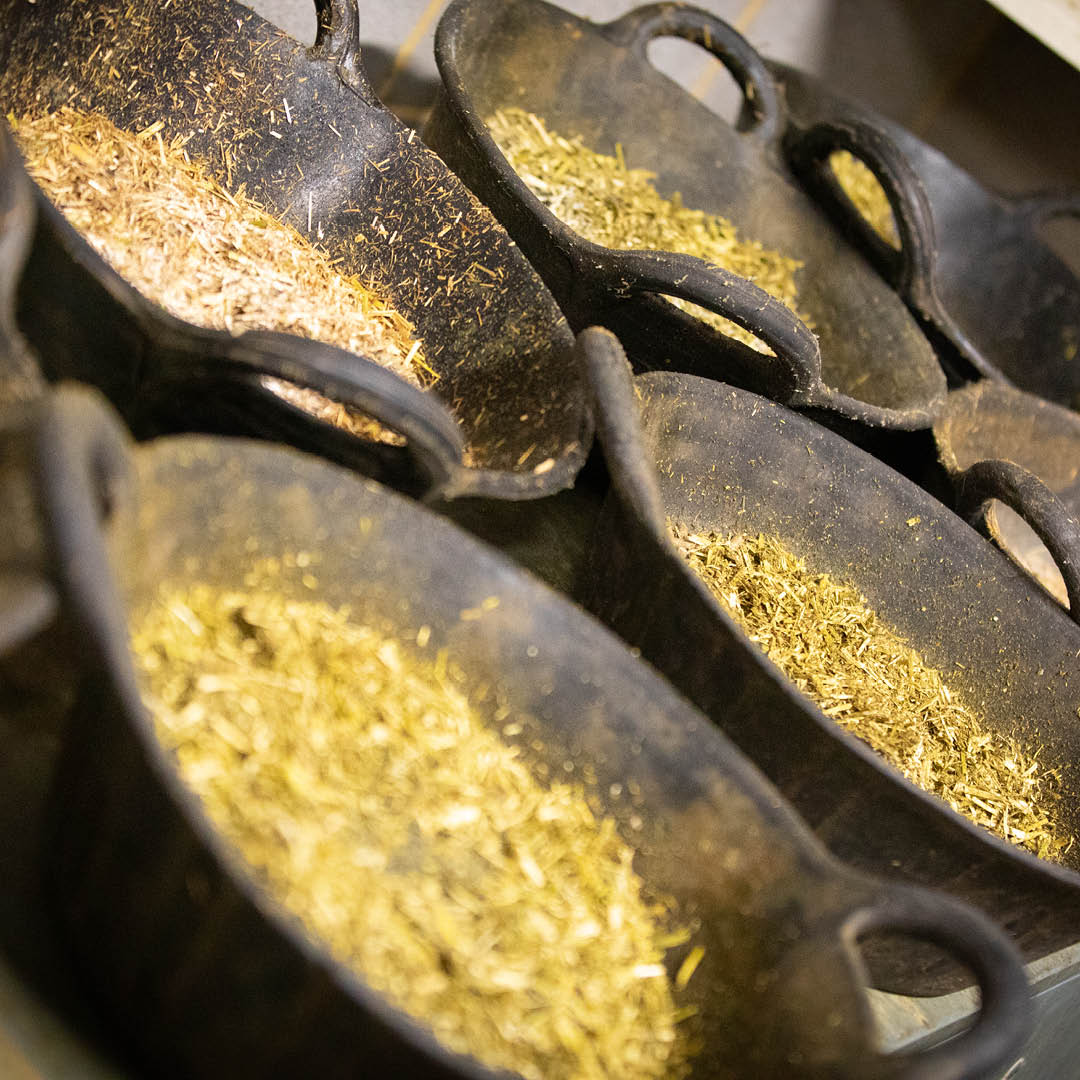Horses have evolved as a grazing animal using a wide range of forage-based carbohydrates as its main source of energy. Carbohydrates are structures within all plants, allowing them to store energy that has been generated by photosynthesis from sunlight. Starch and sugars are two such forms of carbohydrates.
Sugars is a generic term which includes short-chain molecules made up of monosaccharides (glucose, fructose etc). As sugars are consumed, they can be readily absorbed across the digestive tract into the bloodstream, where they can be utilised as an energy source by the horse. Starches, however, require breaking down by digestion before they can be absorbed and used. Starches are formed when sugar molecules are joined together to form larger more complex structures. The length and complexity of these structures, as well as several other factors, affects how easily and quickly they can be digested down to simple sugars and absorbed. The starch and sugar content of different plants varies, grasses typically being lower starch but higher in sugar (mixed grass pasture 1% starch and up to 7% sugar) and grains higher starch (Barley approx. 55% starch and 2.5% sugar).
Starches can be digested or broken down to produce simple sugars by enzymes in the small intestines of the horse. If these starch molecules pass through the small intestines and into the large intestines, they can also then also be digested by the bacteria present in the hindgut. Bacterial digestion of starches produces Volatile Fatty Acids, which can be absorbed and used for energy. Depending on the type of bacteria involved the digestion of starch can also produce lactate, more commonly known as lactic acid. If excessive quantities of lactic acid is produced in the hindgut this can have a detrimental effect on the essential bacterial population. This can reduce how effectively the horse can digest fibre and absorb nutrients, as well as being linked to increasing the risk of conditions such as laminitis, colic, and even behavioural issues.
The fact that excessively high starch and sugar diets have been linked with a number of conditions has resulted in a number of “low starch” concentrate feeds for horses being readily available. These options may be ideal for starch sensitive individuals, such as those with a clinical history of laminitis. However, these may not be suitable for all horses. All horses have a requirement for carbohydrates; simple sugars are more readily available for use than other forms of energy such as fats, proteins or fibres. Horses performing at a higher intensity may require a higher inclusion of starch to fuel performance; starch and sugar can be valuable energy sources for many horses.
The Nutritional Research Councils recommended starch intake is up to 2g/kg body weight per meal, or for those with starch sensitivity is up to 1g/kg body weight per meal. This is very different to the % of starch listed on a bag as this guideline considers the total starch intake, rather than a crude percentage within one product. Staying within these guidelines also reduces the risk of starch passing undigested into the large intestine where it can have negative implications. Horses can be provided a higher starch diet if required quite easily by splitting their daily feeds into a greater number of meals; in doing so the starch intake per meal can be reduced to below the maximum recommended levels.
While daily rations and individual meals can be designed to be low in starch and sugars, they can’t by their very plant-based nature be starch and sugar-free. When designing a ration for a horse it is important to consider feeding for body condition, clinical history, workload and intensity in order to select appropriate feeds accordingly.



